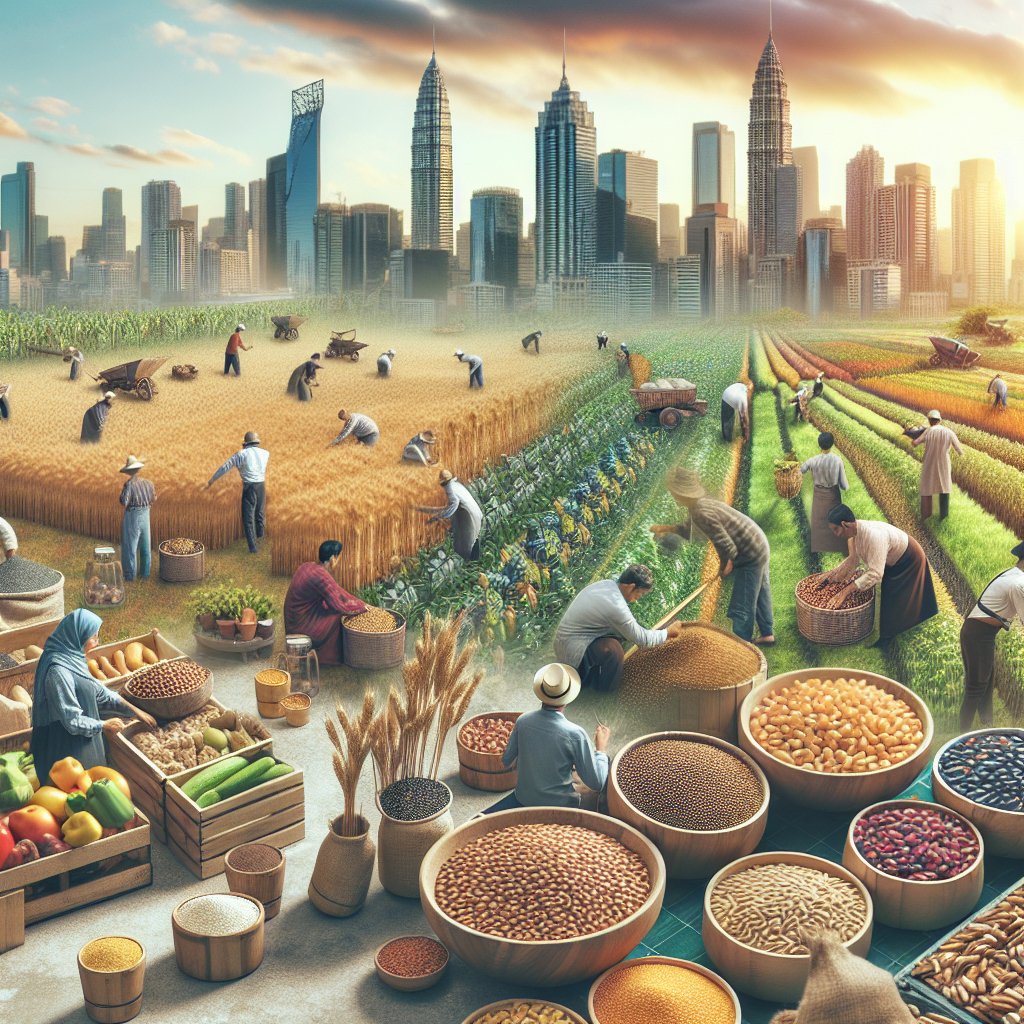Urban agriculture plays a pivotal role in reshaping local grain markets, providing fresh produce and grains to urban populations while fostering community engagement and sustainability. As cities continue to grow, the demand for locally sourced food has surged, prompting innovative agricultural practices that utilize limited urban spaces. This article explores the multifaceted contributions of urban agriculture to local grain markets, examining its economic, social, and environmental impacts.
The Economic Impact of Urban Agriculture on Grain Markets
Urban agriculture significantly influences local economies by creating new opportunities for grain production and distribution. By cultivating grains within city limits, urban farmers can reduce transportation costs and provide fresher products to consumers. This section delves into the economic benefits of urban grain production, including job creation, local business support, and increased food security.
Job Creation and Economic Opportunities
One of the most immediate economic benefits of urban agriculture is job creation. Urban farms often require a diverse workforce, from skilled agricultural workers to marketing and sales personnel. These jobs not only provide income for individuals but also contribute to the local economy by increasing spending in the community. Furthermore, urban agriculture can stimulate the growth of related businesses, such as seed suppliers, equipment manufacturers, and local markets.
- Direct Employment: Urban farms often hire local residents, providing them with employment opportunities that may not be available in other sectors.
- Support for Local Businesses: As urban farms thrive, they create demand for local suppliers and services, fostering a network of businesses that support one another.
- Entrepreneurial Ventures: Urban agriculture encourages entrepreneurship, with individuals starting their own grain production or processing businesses, contributing to economic diversity.
Enhancing Food Security
Urban agriculture directly addresses food security issues by increasing the availability of locally produced grains. In many urban areas, access to fresh and nutritious food is limited, leading to food deserts where residents struggle to find healthy options. By establishing grain production within cities, urban farmers can provide a reliable source of food for their communities.
- Local Sourcing: Urban agriculture reduces reliance on distant suppliers, ensuring that grains are available even during supply chain disruptions.
- Community Resilience: By fostering local grain production, communities become more resilient to economic fluctuations and global market changes.
- Education and Awareness: Urban farms often engage in educational initiatives, teaching residents about nutrition and the importance of local food systems.
The Social and Environmental Benefits of Urban Grain Production
Beyond economic advantages, urban agriculture contributes to social cohesion and environmental sustainability. This section examines how urban grain farming fosters community engagement, promotes environmental stewardship, and enhances urban landscapes.
Building Community Connections
Urban agriculture serves as a catalyst for community building, bringing together individuals from diverse backgrounds to collaborate on food production. Community gardens and urban farms often become gathering places where residents can share knowledge, resources, and experiences.
- Community Engagement: Urban farms often host workshops, events, and volunteer days, encouraging community members to participate in food production and learn about sustainable practices.
- Social Networks: These initiatives help build social networks, fostering relationships among residents and creating a sense of belonging.
- Empowerment: Urban agriculture empowers individuals by providing them with the skills and knowledge needed to grow their own food, promoting self-sufficiency.
Environmental Sustainability
Urban grain production also plays a crucial role in promoting environmental sustainability. By utilizing innovative farming techniques, urban farmers can minimize their ecological footprint and contribute to a healthier urban environment.
- Green Spaces: Urban farms transform vacant lots and underutilized spaces into green areas, improving air quality and enhancing biodiversity.
- Soil Health: Practices such as crop rotation and organic farming improve soil health, leading to more sustainable grain production.
- Water Management: Urban farms often implement rainwater harvesting and other water conservation techniques, reducing the strain on municipal water systems.
Challenges and Future Directions for Urban Grain Markets
Despite the numerous benefits of urban agriculture, several challenges must be addressed to fully realize its potential in local grain markets. This section discusses the obstacles urban farmers face and explores future directions for enhancing urban grain production.
Barriers to Urban Agriculture
Urban farmers encounter various challenges that can hinder their ability to produce grains effectively. These barriers include limited access to land, regulatory hurdles, and financial constraints.
- Land Access: Securing land for urban farming can be difficult due to high real estate prices and competing interests for urban space.
- Regulatory Challenges: Zoning laws and agricultural regulations may not always support urban farming initiatives, creating obstacles for aspiring urban farmers.
- Financial Limitations: Many urban farms operate on tight budgets, making it challenging to invest in necessary infrastructure and resources.
Innovative Solutions and Future Directions
To overcome these challenges, urban agriculture must embrace innovative solutions and collaborative approaches. Future directions for urban grain markets may include:
- Policy Advocacy: Advocating for supportive policies and regulations that facilitate urban farming can help create a more favorable environment for grain production.
- Community Partnerships: Collaborating with local organizations, businesses, and government agencies can provide urban farmers with the resources and support they need to thrive.
- Technological Advancements: Embracing technology, such as vertical farming and hydroponics, can maximize space and increase grain yields in urban settings.
Conclusion
Urban agriculture is a powerful force in transforming local grain markets, offering economic, social, and environmental benefits. By fostering community engagement, enhancing food security, and promoting sustainability, urban grain production contributes to healthier and more resilient urban environments. As cities continue to evolve, the integration of urban agriculture into local food systems will be essential for meeting the growing demand for fresh, locally sourced grains. Addressing the challenges faced by urban farmers and embracing innovative solutions will pave the way for a more sustainable and equitable food future.













